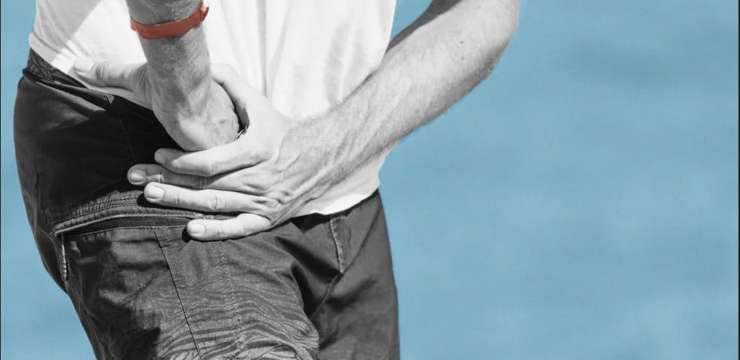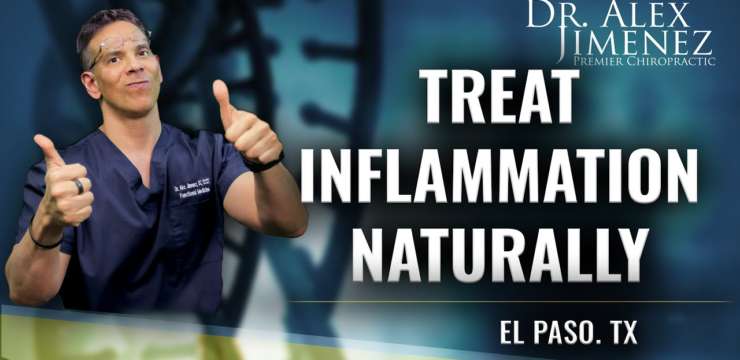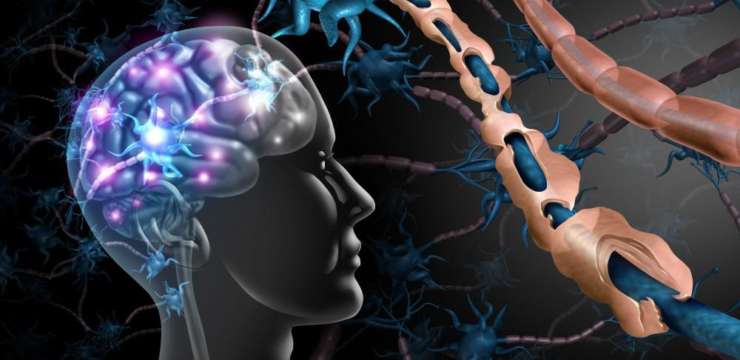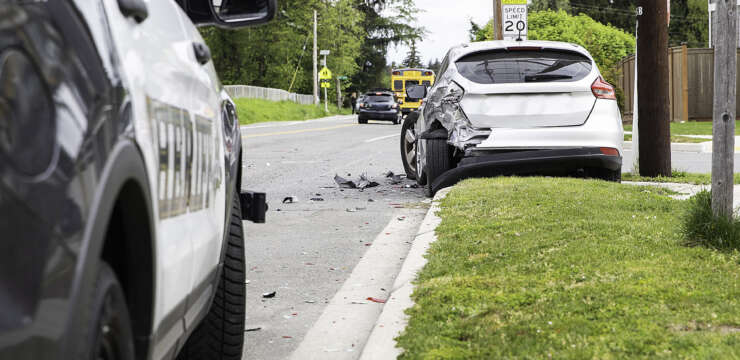
Table of Contents
Introduction: Auto Accidents and Hidden Injuries

Every year, millions of people are involved in motor vehicle accidents (MVAs), many of which result in injuries that are not immediately visible. While some individuals walk away thinking they’re unharmed, pain, stiffness, and reduced mobility can appear hours or even days later. Musculoskeletal injuries, nerve irritation, and soft tissue trauma often cause these delayed symptoms, which may worsen without proper treatment.
Musculoskeletal injuries are especially common after even minor car crashes. The sudden force from an accident can cause the body to jolt, twist, or whip forward and backward rapidly. This intense movement puts stress on the muscles, joints, ligaments, and nerves, especially in the neck, back, and shoulders. Whiplash is one of the most recognized injuries after a crash, but sprains, strains, and spinal misalignments also occur frequently (The Winchester Institute, n.d.).
Unfortunately, many accident victims are told to “wait and see” if the pain goes away on its own. Such delays can lead to chronic issues, scar tissue buildup, and long-term dysfunction. Ignoring symptoms can also complicate personal injury claims because waiting too long to seek care may be used as evidence against the severity of the injury (MVAMVP, n.d.).
That’s where chiropractic and integrative medicine come in. These healthcare approaches are designed not only to relieve pain but also to restore normal function and promote long-term healing. Chiropractors focus on correcting joint misalignments, improving mobility, and reducing inflammation using non-invasive methods. When combined with other disciplines, such as nutrition and soft tissue therapy, this creates a powerful recovery plan tailored to the individual.
In this blog post, we’ll explore how chiropractic therapy supports recovery after an auto accident. You’ll also learn how Dr. Alexander Jimenez, a dual-licensed chiropractor and nurse practitioner in El Paso, uses a unique integrative model to treat both the injury and the person behind it.
Understanding Musculoskeletal and Nerve Injuries After MVAs
Motor vehicle accidents place a significant and unexpected strain on the body. Even at low speeds, the force of impact can cause the spine and joints to move in ways they were never meant to. These abnormal movements can lead to various musculoskeletal injuries, including whiplash, muscle strains, ligament sprains, disc herniations, and misalignments of the spinal vertebrae.
One of the most common injuries is whiplash, which happens when the head is suddenly forced forward and then whipped backward. This motion overstretches the muscles and ligaments in the neck and upper back, often leading to pain, stiffness, and reduced range of motion (The Winchester Institute, n.d.).
Muscle contusions and strains can also occur when the body slams against the seatbelt, steering wheel, or airbags. Inflammation may develop around these injured tissues, contributing to pain and limiting movement. If left untreated, the wounded areas may form scar tissue that interferes with muscle function and flexibility (Square One Health, n.d.).
In addition to musculoskeletal issues, nerve injuries are another major concern. Compressed or irritated spinal nerves can result in numbness, tingling, or shooting pain in the arms, legs, or back. These symptoms can indicate conditions such as radiculopathy or peripheral neuropathy, which are often caused by disc bulges, inflammation, or vertebral misalignment (Alexander Orthopaedics, n.d.).
What makes these injuries especially problematic is that many don’t show up on X-rays or during a routine checkup. Chiropractors, such as Dr. Alexander Jimenez, utilize advanced diagnostic imaging techniques, including MRIs and motion studies, to identify subtle damage that may be overlooked during a traditional ER visit. This dual-scope approach—combining medical and chiropractic evaluation—ensures nothing is overlooked.
Identifying these injuries early and accurately is crucial to initiating the correct treatment and preventing long-term complications. That’s why comprehensive assessment and prompt care are critical following any auto accident, no matter how “minor” it seems.
Chiropractic Therapy: A Non-Invasive Solution
Chiropractic therapy is a safe, drug-free, and non-invasive way to treat injuries sustained in a motor vehicle accident. Instead of masking symptoms with medications, chiropractors focus on addressing the root cause of pain by restoring the body’s natural alignment and function. This hands-on approach is particularly effective for treating musculoskeletal and nerve injuries resulting from sudden impact.
Chiropractic care often begins with a thorough examination and a review of the patient’s medical history and accident details. Many chiropractors also utilize imaging tools, such as X-rays or MRIs, to assess the condition of the spine, joints, and surrounding tissues. Dr. Alexander Jimenez, for example, uses dual-scope assessments—combining the expertise of a chiropractor and a nurse practitioner—to evaluate injuries from both a structural and clinical standpoint. This enables a more accurate diagnosis and a tailored treatment plan (Jimenez, n.d.).
Once the injury is identified, chiropractic care involves targeted techniques such as spinal adjustments, mobilization, and muscle work. Spinal adjustments help realign the vertebrae, reduce pressure on nerves, and promote better communication between the brain and body. These adjustments also help improve blood flow and stimulate the body’s natural healing response (Miami Chiropractors, n.d.).
Unlike surgery or heavy medications, chiropractic therapy has minimal side effects. It can be safely used as a first-line approach, especially when symptoms include neck pain, back stiffness, joint immobility, or muscle tightness. In many cases, early intervention with chiropractic care reduces the need for invasive procedures later on (Apex Orthopedic & Sports Nutrition, n.d.).
For patients recovering from car accidents, chiropractic therapy doesn’t just manage pain—it helps restore function and improve quality of life. When combined with integrative modalities such as health coaching, nutritional guidance, or rehabilitative exercises, it forms the backbone of a comprehensive, patient-centered recovery plan.
Soft Tissue Therapy and Inflammation Reduction
Soft tissue injuries are among the most common—and painful—outcomes of motor vehicle accidents. These injuries affect muscles, tendons, and ligaments, often resulting in inflammation, swelling, and limited mobility. Unlike broken bones, which are clearly visible on X-rays, soft tissue damage can be harder to detect but equally debilitating.
Chiropractors are trained to recognize and treat soft tissue injuries through targeted soft tissue therapy. This hands-on approach includes techniques such as therapeutic massage, myofascial release, stretching, and manual lymphatic drainage. These methods work by increasing blood flow to the injured areas, reducing inflammation, and facilitating the body’s ability to flush out waste products that accumulate during injury (Pacific Coast Injury Group, 2025).
Inflammation is the body’s natural response to injury, but chronic inflammation can slow healing and cause additional pain. Soft tissue therapy helps to break this cycle by releasing tension in the muscles and improving circulation. It also helps prevent scar tissue from forming, which can otherwise lead to stiffness and long-term dysfunction (DeBruin Chiropractic, n.d.).
Dr. Alexander Jimenez frequently integrates soft tissue therapy into his treatment plans for MVA victims in El Paso. His clinical rationale includes improving the quality of connective tissue and reactivating weakened muscle groups. These therapies are often combined with spinal adjustments and rehabilitative movements to accelerate recovery and reduce pain.
By addressing soft tissue trauma early, chiropractic care helps reduce swelling, restore normal muscle function, and support full-body recovery. This step is especially important for patients whose pain may not be linked to broken bones but to deeper, hidden tissue damage.
Spinal Adjustments and Alignment Restoration
Spinal misalignments are a frequent and serious result of motor vehicle accidents. When the body is suddenly jolted or twisted, the vertebrae can shift out of their normal position—a condition known as subluxation. This misalignment can pinch nerves, compress discs, and throw off the body’s natural balance. Left untreated, spinal subluxations may lead to chronic pain, reduced mobility, headaches, and postural changes.
Spinal adjustments, also called spinal manipulations, are a cornerstone of chiropractic care. These controlled, precise movements are used to gently realign the vertebrae and restore normal motion to the joints. Realigning the spine not only relieves pressure on nerves but also helps the musculoskeletal system function properly as a whole (Miami Chiropractors, n.d.).
When a chiropractor performs a spinal adjustment, it can result in immediate improvement in posture, pain reduction, and better range of motion. The nervous system also benefits, as proper alignment enhances communication between the brain and body. This leads to improved healing, reduced inflammation, and a more balanced response to physical stress (Quantum Chiropractic, n.d.).
Dr. Alexander Jimenez incorporates spinal adjustments in his dual-scope clinical practice in El Paso to correct post-accident spinal imbalances. By using diagnostic imaging and motion assessments, he pinpoints the specific segments of the spine that need correction. His goal is not only to reduce pain but also to restore biomechanical function and prevent long-term degeneration.
Through consistent chiropractic adjustments, patients often report improvements in pain, sleep quality, concentration, and overall energy levels. These benefits are especially vital for individuals recovering from auto accidents, where spinal trauma can silently erode quality of life over time.
Improving Range of Motion and Mobility
After a motor vehicle accident, many patients struggle with stiffness, limited mobility, and difficulty performing basic movements. Whether it’s turning the neck, bending at the waist, or raising the arms overhead, musculoskeletal restrictions can interfere with everyday life and prolong recovery. These limitations are often caused by inflammation, joint misalignment, soft tissue damage, or a combination of all three.
Chiropractic care focuses heavily on restoring proper joint mechanics and flexibility. By improving alignment and decreasing muscle tension, chiropractic adjustments and soft tissue therapies help enhance the body’s natural range of motion (ROM). A well-functioning spine and musculoskeletal system are key to recovering from injuries and regaining independence in daily activities (Brookdale Health, n.d.).
One of the most effective ways chiropractors improve range of motion (ROM) is by incorporating rehabilitative exercises into their care plans. These targeted movements are designed to stretch and strengthen the muscles surrounding injured joints gently. For example, neck and shoulder mobility exercises can help reverse the effects of whiplash, while lower back exercises restore spinal flexibility after a rear-end collision (Total Vitality Medical, n.d.).
In Dr. Alexander Jimenez’s clinic, patients undergo guided mobility sessions tailored to their unique injuries. He may recommend resistance bands, neuromuscular reeducation, or passive stretching, depending on the type of injury and its healing phase. These techniques aim to prevent stiffness, improve circulation, and reestablish normal movement patterns.
Restoring mobility after an auto accident is not just about moving better—it’s about living better. Without intervention, a limited range of motion (ROM) can lead to muscle compensation, posture problems, and future injuries. Chiropractic and integrative treatments help patients rebuild their strength, flexibility, and confidence from the inside out.
The Role of Integrative Medicine in Holistic Recovery
Chiropractic care is a powerful foundation for recovery after a motor vehicle accident, but when combined with integrative medicine, it becomes a truly comprehensive solution. Integrative medicine blends the best of conventional treatments and holistic approaches to address the physical, emotional, and metabolic aspects of healing.
After an auto accident, patients may experience not just pain and stiffness but also fatigue, digestive issues, sleep disturbances, and emotional stress. These symptoms are often interconnected and require a whole-body approach to resolve. Integrative medicine combines chiropractic therapy, functional medicine, nutrition, physical therapy, and mental health support to treat the person as a whole, rather than just their injuries (Jackson Healing Arts, n.d.).
For example, nutritional therapy can play a crucial role in reducing inflammation and accelerating tissue repair. Anti-inflammatory diets rich in omega-3 fatty acids, antioxidants, and clean protein sources help support joint health and cellular recovery. Meanwhile, health coaching can help patients develop sustainable habits around movement, hydration, rest, and emotional resilience.
Dr. Alexander Jimenez integrates all these components at his El Paso clinic. As a chiropractor and nurse practitioner, he understands that no two patients heal the same way. Some may need spinal adjustments and soft tissue therapy, while others benefit from hormonal evaluations, gut health assessments, or lifestyle counseling. His dual-scope approach bridges physical medicine and functional care to deliver results that are both fast and lasting (Jimenez, n.d.).
By working with a team that understands both the structural and systemic impacts of trauma, patients get a higher level of personalized care. Integrative medicine doesn’t just treat the accident—it empowers the body to restore balance, strengthen itself, and prevent future complications.
Clinical Insights from Dr. Alexander Jimenez, DC, APRN, FNP-BC
Dr. Alexander Jimenez is a dual-licensed chiropractor and family nurse practitioner based in El Paso, Texas, specializing in personal injury recovery, musculoskeletal rehabilitation, and integrative medicine. With over 30 years of clinical experience, Dr. Jimenez brings a rare combination of structural expertise and medical insight to the treatment of auto accident injuries. His distinctive approach, which merges chiropractic therapy with functional and medical diagnostics, sets a gold standard for post-MVA recovery.
At the heart of Dr. Jimenez’s care model is the belief that healing begins at the root. Rather than chasing symptoms, he investigates underlying causes—such as spinal misalignments, soft tissue damage, hormonal imbalances, or nervous system dysfunction—using a suite of advanced tools. These include motion analysis, MRI interpretation, orthopedic assessments, lab tests, and gut health diagnostics. His dual-scope evaluation allows him to identify subtle yet significant injuries that standard exams might miss (Jimenez, n.d.).
In El Paso’s high-traffic injury landscape, Dr. Jimenez often sees cases of whiplash, disc herniations, nerve compression, and myofascial pain following rear-end collisions and intersection accidents. His treatment strategies include spinal adjustments, soft tissue therapy, neuromuscular reeducation, and patient-centered rehabilitation. Additionally, he provides nutrition protocols and hormone assessments to optimize the body’s healing capacity from the inside out.
One of Dr. Jimenez’s most important contributions is his ability to merge medical necessity with legal documentation. In personal injury cases, thorough documentation is crucial to ensure that patients receive the appropriate compensation and care. Dr. Jimenez works closely with attorneys and legal teams to provide detailed injury reports, diagnosis codes, imaging results, and treatment rationales. His assessments meet both clinical and legal standards, supporting patient claims while ensuring the delivery of ethical, evidence-based care.
Through a personalized, integrative lens, Dr. Jimenez not only relieves pain but also helps his patients reclaim their function, lifestyle, and sense of well-being. His clinic stands as a model for what’s possible when chiropractic and medical disciplines collaborate for truly comprehensive healing.
Chiropractic and Legal Documentation: Supporting Personal Injury Claims
After a motor vehicle accident, seeking prompt chiropractic care is crucial not only for your health but also for your legal protection. Injuries like whiplash, disc herniation, or nerve damage may not appear on initial X-rays or be immediately diagnosed in an emergency room. However, if these issues are not documented early, they can weaken personal injury claims and delay necessary treatment.
Chiropractors play a critical role in the legal-medical integration of personal injury cases. They evaluate injuries, monitor progress, and keep detailed treatment records that serve as medical evidence. This includes documenting pain levels, diagnostic imaging results, functional limitations, and treatment effectiveness over time (MVAMVP, n.d.).
Dr. Alexander Jimenez excels in this role due to his dual licensure as a chiropractor and nurse practitioner. His assessments meet rigorous clinical and legal documentation standards. He collaborates with attorneys, insurance companies, and case managers to ensure patients’ medical records are accurate, complete, and court-ready. This level of documentation supports fair compensation and prevents delays in the legal process.
When chiropractic care is initiated within the recommended 72-hour window, it not only improves recovery outcomes but also strengthens the credibility of injury claims in court.
Conclusion: Restoring Health Through Chiropractic and Integrative Care
Motor vehicle accidents can leave lasting impacts on the body, even when external injuries appear minor. Hidden musculoskeletal damage, nerve irritation, inflammation, and soft tissue trauma can compromise daily function and quality of life. Left untreated, these injuries often become chronic issues, causing pain, stiffness, and dysfunction for years.
Chiropractic therapy provides a non-invasive, holistic approach to addressing these injuries at their root cause. Through spinal adjustments, soft tissue therapy, and rehabilitative care, chiropractors help patients restore mobility, reduce inflammation, and support long-term musculoskeletal health. When paired with integrative medicine, which includes nutritional guidance, functional assessments, and mind-body support, patients experience a deeper and more lasting recovery.
In El Paso, Dr. Alexander Jimenez stands at the forefront of this model. With a dual-scope background as both a chiropractor and a nurse practitioner, he bridges the gap between traditional medical care and natural healing. His personalized approach ensures each patient receives a plan tailored to their unique injuries and long-term wellness goals.
Whether you’re managing whiplash, back pain, or nerve compression after an accident, early and comprehensive care matters. Chiropractic and integrative medicine offer more than just symptom relief—they provide a path to true recovery and a better quality of life.
References
-
Apex Orthopedic & Sports Nutrition. (n.d.). Should I see a chiropractor after a car accident?
-
Brookdale Health. (n.d.). Why chiropractic care is essential after a car accident.
-
Cesak Chiropractic. (n.d.). How chiropractic care can help after an auto accident injury.
-
DeBruin Chiropractic. (n.d.). How chiropractic treatments can improve your range of motion.
-
Dr. Alexander Jimenez. (n.d.). El Paso Functional Medicine & Integrative Wellness Clinic.
-
Miami Chiropractors. (n.d.). The role of chiropractic care in rehabilitation after a car accident.
-
MVAMVP. (n.d.). Why chiropractic care is essential after a motor vehicle accident.
-
Pacific Coast Injury Group. (2025, January 31). Chiropractic care for auto accident injuries.
-
Quantum Chiropractic. (n.d.). 6 reasons chiropractic care can help after a car accident.
-
Square One Health. (n.d.). Chiropractic care for back pain relief: How chiropractors can help.
-
Total Vitality Medical. (n.d.). Car accident injuries treated by chiropractors.
Disclaimers
Professional Scope of Practice *
The information herein on "Chiropractic Accident Recovery Care After an Injury" is not intended to replace a one-on-one relationship with a qualified health care professional or licensed physician and is not medical advice. We encourage you to make healthcare decisions based on your research and partnership with a qualified healthcare professional.
Blog Information & Scope Discussions
Welcome to El Paso's wellness blog, where Dr. Alex Jimenez, DC, FNP-C, a board-certified Family Practice Nurse Practitioner (FNP-C) and Chiropractor (DC), presents insights on how our team is dedicated to holistic healing and personalized care. Our practice aligns with evidence-based treatment protocols inspired by integrative medicine principles, similar to those found on dralexjimenez.com, focusing on restoring health naturally for patients of all ages.
Our areas of chiropractic practice include Wellness & Nutrition, Chronic Pain, Personal Injury, Auto Accident Care, Work Injuries, Back Injury, Low Back Pain, Neck Pain, Migraine Headaches, Sports Injuries, Severe Sciatica, Scoliosis, Complex Herniated Discs, Fibromyalgia, Chronic Pain, Complex Injuries, Stress Management, Functional Medicine Treatments, and in-scope care protocols.
Our information scope is limited to chiropractic, musculoskeletal, physical medicine, wellness, contributing etiological viscerosomatic disturbances within clinical presentations, associated somato-visceral reflex clinical dynamics, subluxation complexes, sensitive health issues, and functional medicine articles, topics, and discussions.
We provide and present clinical collaboration with specialists from various disciplines. Each specialist is governed by their professional scope of practice and their jurisdiction of licensure. We use functional health & wellness protocols to treat and support care for the injuries or disorders of the musculoskeletal system.
Our videos, posts, topics, subjects, and insights cover clinical matters, issues, and topics that relate to and directly or indirectly support our clinical scope of practice.*
Our office has reasonably attempted to provide supportive citations and has identified the relevant research studies or studies supporting our posts. We provide copies of supporting research studies available to regulatory boards and the public upon request.
We understand that we cover matters that require an additional explanation of how they may assist in a particular care plan or treatment protocol; therefore, to discuss the subject matter above further, please feel free to ask Dr. Alex Jimenez, DC, APRN, FNP-BC, or contact us at 915-850-0900.
We are here to help you and your family.
Blessings
Dr. Alex Jimenez DC, MSACP, APRN, FNP-BC*, CCST, IFMCP, CFMP, ATN
email: coach@elpasofunctionalmedicine.com
Licensed as a Doctor of Chiropractic (DC) in Texas & New Mexico*
Texas DC License # TX5807
New Mexico DC License # NM-DC2182
Licensed as a Registered Nurse (RN*) in Texas & Multistate
Texas RN License # 1191402
ANCC FNP-BC: Board Certified Nurse Practitioner*
Compact Status: Multi-State License: Authorized to Practice in 40 States*
Graduate with Honors: ICHS: MSN-FNP (Family Nurse Practitioner Program)
Degree Granted. Master's in Family Practice MSN Diploma (Cum Laude)
Dr. Alex Jimenez, DC, APRN, FNP-BC*, CFMP, IFMCP, ATN, CCST
My Digital Business Card






